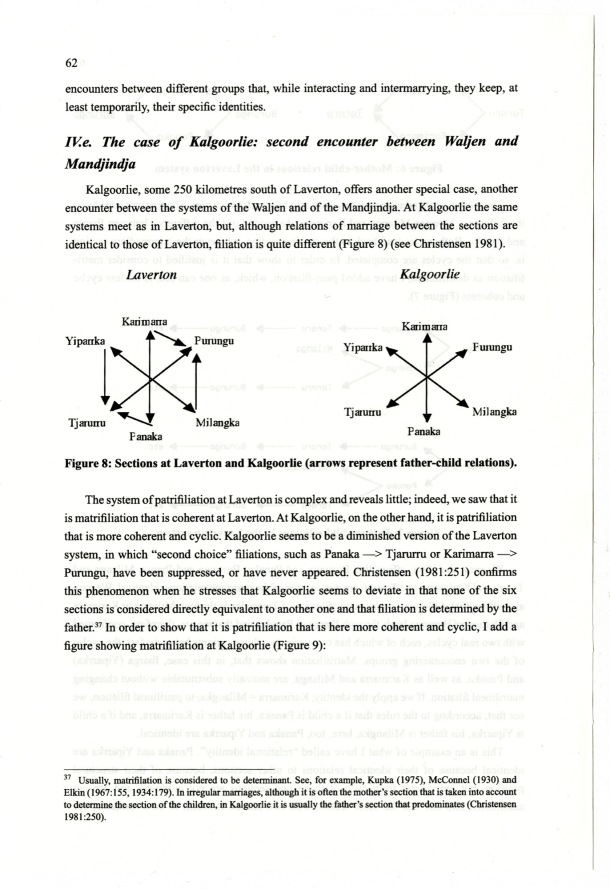|
| 
[Note: this transcription was produced by an automatic OCR engine]
62
encounters between ditfcrent groups that, while interacting and intermarrying, they keep, at
least temporarily, their specific identities.
I Va The case of Kalgoorlie: second encounter between Waljen and
Mandjindja
Kalgoorlie, some 250 kilometres south of Laverton, offers another special case, another
encounter between the systems of the Waljen and of the Mandjindja. At Kalgoorlie the same
systems meet as in Laverton, but, although relations of marriage between the sections are
identical to those of Laverton, filiation is quite different Figure 8 see Christensen 1981.
Laverton Kalgoorlie
Kafimma Karimarra
Yipmka Plmmgu Yiparrka Pumngu
T‘ Milangka
Tjarunu Milangka lama“ P ka
Fanaka 3“
Figure 8: Sections at Laverton and Kalgoorlie arrows represent father-child relations.
The system of patrifiliation at Laverton is complex and reveals little; indeed, we saw that it
is matrifiliation that is coherent at Laverton. At Kalgoorlie, on the other hand, it is patrifiliation
that is more coherent and cyclic. Kalgoorlie seems to be a diminished version of the Laverton
system, in which “second choice” filiations, such as Panaka 4> Tjarurru or Karimarra —>
Purungu, have been suppressed, or have never appeared. Christensen 1981:251 confirms
this phenomenon when he stresses that Kalgoorlie seems to deviate in that none of the six
sections is considered directly equivalent to another one and that filiation is determined by the
father." In order to show that it is patrifiliation that is here more coherent and cyclic, I add a
figure showing matrifiliation at Kalgoorlie Figure 9:
37 Usually, manifilation is considered to be determinant. See, for example, Kupka 1975, McConnel 1930 and
Elkin 1967: l 55. 1934: l 79. In irregular maniages, although it is alien the mother’s section that is taken into account
to determine the section of the children, in Kalgoorlie it is usually the father's section that predominates Christensen
1981 2250.
|